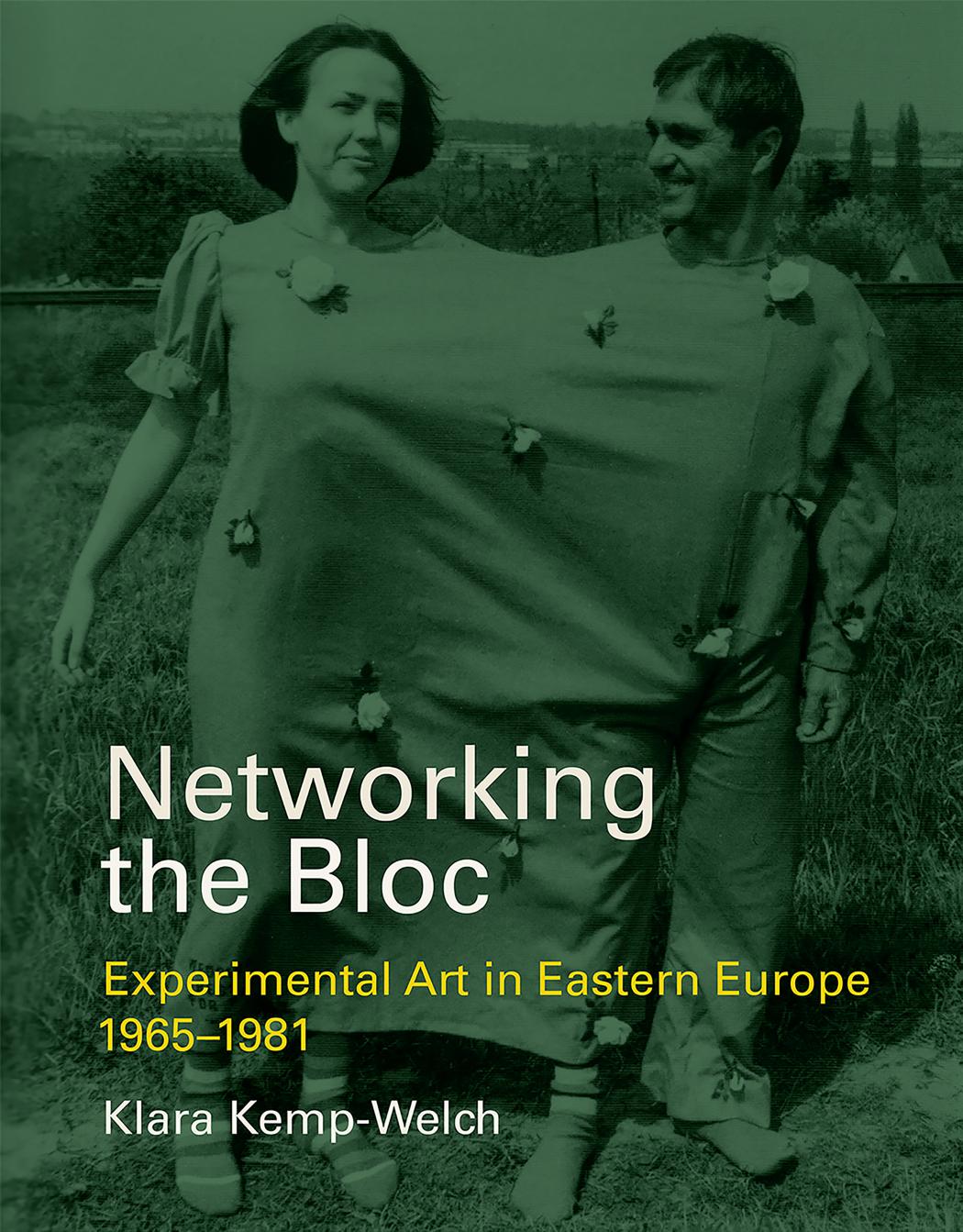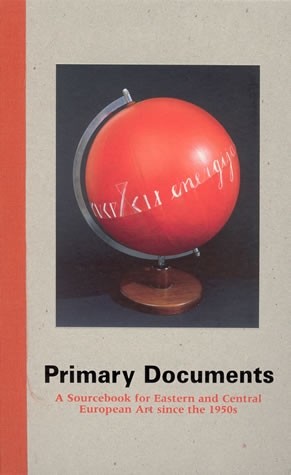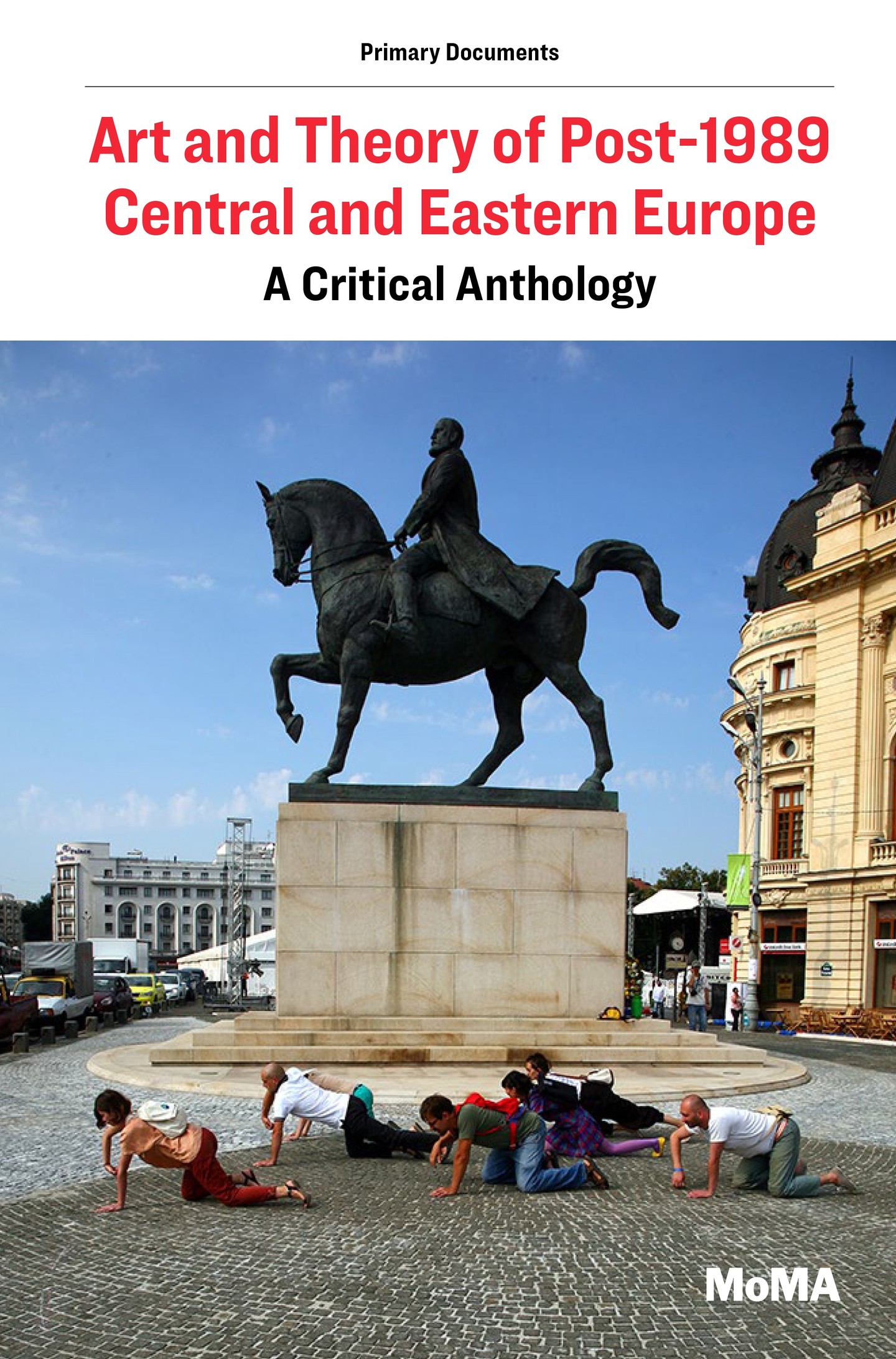Klara Kemp-Welch: Networking the Bloc: Experimental Art in Eastern Europe 1965-1981 (2019)
Filed under book | Tags: · 1960s, 1970s, art history, avant-garde, central europe, cold war, collaboration, community, conceptual art, documentation, east-central europe, eastern europe, experimental art, language, mail art, neo-avant-garde, networks, performance art

“Throughout the 1970s, a network of artists emerged to bridge the East-West divide, and the no less rigid divides between the countries of the Eastern bloc. Originating with a series of creative initiatives by artists, art historians, and critics and centered in places like Budapest, Poznań, and Prague, this experimental dialogue involved Western participation but is today largely forgotten in the West. In Networking the Bloc, Klara Kemp-Welch vividly recaptures this lost chapter of art history, documenting an elaborate web of artistic connectivity that came about through a series of personal encounters, pioneering dialogues, collaborative projects, and cultural exchanges. Countering the conventional Cold War narrative of Eastern bloc isolation, Kemp-Welch shows how artistic ideas were relayed among like-minded artists across ideological boundaries and national frontiers.
Much of the work created was collaborative, and personal encounters were at its heart. Drawing on archival documents and interviews with participants, Kemp-Welch focuses on the exchanges and projects themselves rather than the personalities involved. Each of the projects she examines relied for its realization on a network of contributors. She looks first at the mobilization of the network, from 1964 to 1972, exploring five pioneering cases: a friendship between a Slovak artist and a French critic, an artistic credo, an exhibition, a conceptual proposition, and a book. She then charts a series of way stations for experimental art from the Soviet bloc between 1972 and 1976—points of distribution between studios, private homes, galleries, and certain cities. Finally, she investigates convergences—a succession of shared exhibitions and events in the second half of the 1970s in locations ranging from Prague to Milan to Moscow. Networking the Bloc, Kemp-Welch invites us to rethink the art of the late Cold War period from Eastern European perspectives.”
Publisher MIT Press, 2019
ISBN 9780262038300, 0262038307
xi+468 pages
Reviews: Cristian Nae (ARTMargins, 2019), Denisa Tomkova (H-Net, 2020), Henry Meyric Hughes (Critique d’art, 2020).
PDF (17 MB)
Comment (0)Primary Documents: A Sourcebook for Eastern and Central European Art Since the 1950s (2002)
Filed under book | Tags: · art history, body art, central europe, conceptual art, east-central europe, eastern europe, neo-avant-garde, performance art, politics, socialism, southeastern europe

“For several decades after World War II, Communist governments suppressed artistic freedom in Eastern Europe, creating conditions for the development of artistic expression markedly different from those in the West. Primary Documents provides an introduction for English-speaking readers to influential figures in the artistic and critical realms of the region and includes seminal artists’ writings, manifestos and texts by art historians from the past four decades. Many of these texts originally appeared in obscure journals in various foreign languages and are translated here for the first time.
The book, resulting from the research of an international team of scholars, artists, and curators working with The Museum of Modern Art, includes texts from Bulgaria, Croatia, the Czech Republic, Estonia, Hungary, Latvia, Macedonia, Poland, Romania, Russia, Serbia, Slovakia, and Slovenia. The chapters, organized thematically, are preceded by brief introductions and followed by case studies that chronicle events or describe the creation or reception of artworks.”
Edited by Laura Hoptman and Tomáš Pospiszyl
Foreword by Ilya Kabakov
Publisher Museum of Modern Art, New York, 2002
ISBN 0870703617, 9780870703614
375 pages
via ARCH
Reviews: Martina Pachmanová (ARTMargins, 2003), Alexei Monroe (Transitions, 2003), Yevgeniy Fiks (Art Journal, 2004).
Publisher
Distributor
WorldCat
PDF (17 MB)
Comment (0)Ana Janevski, Roxana Marcoci, Ksenia Nouril (eds.): Art and Theory of Post-1989 Central and Eastern Europe: A Critical Anthology (2018)
Filed under book | Tags: · 1990s, 2000s, 2010s, archive, art history, central europe, democracy, east-central europe, eastern europe, globalisation, southeastern europe, transition

“The fall of the Berlin Wall and the ripple effects felt over the following years from Bucharest to Prague to Moscow demarcate a significant moment when artists were able to publicly reassess their histories and question the opposition between the former East and the former West. Art and Theory of Post-1989 Central and Eastern Europe takes the pivotal political changes between 1989 and 1991 as its departure point to reflect on the effects that communism’s disintegration across Central and Eastern Europe—including the Soviet Union’s fifteen republics—had on the art practices, criticism, and cultural production of the following decades.
This book presents a selection of the period’s key voices that have introduced recent critical perspectives. Particular attention is given to the research and viewpoints of a new generation of artists, scholars, and curators who have advanced fresh critical perspectives and who are rewriting their own histories. Their examination of artistic practices and systems of cultural production proposes distinct outlooks for acting in the contemporary world while simultaneously rethinking the significance of the socialist legacy on art today.”
Contributors: Branislava Andjelkovic, Edit András, Inke Arns, Marius Babias, Zdenka Badovinac, Ivana Bago, Zbynek Baladrán, Claire Bishop, Luchezar Boyadjiev, Andreas Broeckmann, Boris Buden, Ilya Budraitskis, Ondrej Chrobák, Keti Chukhrov, Kim Conaty, Cosmin Costinas, Eda Cufer, Bojana Cvejic, Ekaterina Degot, Branislav Dimitrijevic, Michelle Elligott, Octavian Esanu, Yevgeniy Fiks, Meghan Forbes, Maja Fowkes, Reuben Fowkes, Boris Groys, Daniel Grún, Marina Gržinic, Vít Havránek, Jon Hendricks, IRWIN (Miran Mohar, Andrej Savski, Roman Uranjek, and Borut Vogelnik), Sanja Ivekovic, Ana Janevski, David Joselit, Tímea Junghaus, Klara Kemp-Welch, Juliet Kinchin, Zofia Kulik, Andres Kurg, Katalin Ladik, Václav Magid, Eva Majewska, David Maljkovic, Roxana Marcoci, Lina Michelkevice, Aldo Milohnic, Viktor Misiano, Rastko Mocnik, Magdalena Moskalewicz, Deimantas Narkevicius, Ksenia Nouril, Ewa Opalka, Martina Pachmanová, Bojana Pejic, Dan Perjovschi, Nataša Petrešin-Bachelez, Piotr Piotrowski, Bojana Piškur, David Platzker, Paulina Pobocha, Tomáš Pospiszyl, Lýdia Pribišová, Oleksiy Radynski, Karol Radziszewski, Christian Rattemeyer, Cristina Ricupero, Georg Schöllhammer, David Senior, Alina ?erban, Slavs and Tatars, Sven Spieker, Tamas St.Auby, Zuzana Štefková, Jakub Stejskal, Mladen Stilinovic, subREAL, Tomás Svoboda, Ovidiu Ṯichindeleanu, Margarita Tupitsyn, Gediminas Urbonas, Nomeda Urbonas, Jonas Valatkevicius, Jelena Vesic, Dmitry Vilensky, Raluca Voinea, What, How & for Whom (Ivet Curlin, Ana Devic, Nataša Ilic, and Sabina Sabolovic), Igor Zabel, Artur Zmijewski.
Publisher Museum of Modern Art, New York, 2018
Primary Documents series
ISBN 9781633450646, 1633450643
408 pages
Reviews: Vesna Vuković (Zivot umjetnosti, 2018), Denisa Tomkova (H-Net, 2019), Milena Tomic (Slavonic and East European Review, 2019), Joanna Mardal (Junctions, 2019), Anežka Bartlová (Art & Antiques, 2019, CZ).
PDF (14 MB, updated on 2022-5-4)
Comment (0)
